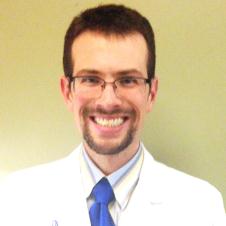I got the call the day we took a test that covered bone marrow transplants during my second year of medical school. I was the match for a patient with multiple myeloma, a disease that may be cured with a hematopoietic stem cell transplant (HPST). Foggy details that I had crammed for the exam (peripheral versus surgical? what growth factor again?) resurfaced as I discussed the procedure in the coming weeks with the staff from the Wisconsin Blood Center. I have learned a great deal by being a HPST donor. The most obvious pedagogical part has been about the biology of stem cell transplants. I will forever remember the adverse effects, pharmacokinetics, and uses of filgrastim (G-CSF). And my recipient's disease has been made much more human and relevant than regurgitating facts about it on an exam. But on a deeper level, I gained a better understanding of empathy from being outside of the white coat.
Empathy for the patient is not limited to their suffering caused by pathology that we are treating. The majority of medical students are young and healthy-we do not regularly visit our doctors. Some of us are health nuts (my hobbies are running and rock climbing). Thus, many of us are at a different state of health than our future patients. It is so easy for us to say "stop smoking" or "lose weight". Few of us truly understand how difficult these "simple" requests can be for our patients. Perhaps medical students benefit when they can walk in a patient's shoes for a little while?
Learning and teaching empathy are difficult propositions. Can seeing medicine from the patient's point of view be a way to accomplish this? Certainly, my journey as a donor did not include the suffering that a sick person experiences. However, I did experience the bureaucracy and inconvenience that can accompany medicine. I had to sign lots of paperwork and wait in lobbies. I had my blood drawn several times and got twice-daily shots of G-CSF. I had my blood pressure measured daily during this time and can understand why white coat hypertension occurs. These logistical details are not taught to medical students, but in a matter of years we will have the power to order all manner of tests and procedures. I got to experience the anxiety of anticipating adverse effects from G-CSF and the procedure. The drug is known to cause bone pain, making me worry that it would prevent me from running or even attending school. I also got to fret about rare effects like life-threatening splenic rupture. Fortunately, I tolerated the drug fairly well with no major adverse effects. However, I did learn the difference between memorizing a laundry list of drug effects ad nauseam and dreading the impact they may have on a patient's life. Ultimately the procedure was like donating blood, except that it took 4 hours to complete. It also required a large-bore needle in both arms, much like a hospitalized patient might have received. While not painful, sitting still for this amount of time is not easy. I now have a better understanding, to a small degree, of what a patient confined to bed rest endures.
The discomfort of the donation process was a good reminder of what the recipient of my cells may be going through. In class, we learned the mnemonic CRAB for multiple myeloma: hyperCalcemia, Renal failure, Anemia, and Bone pain. Multiple myeloma patients are also at risk for infection and can experience nervous system symptoms ranging from retinopathy to loss of bowel and bladder control. Reviewing this in my head helped me get through filtering of 24,000 mL of my blood to collect the cells needed to cure this disease.
Of course, the medicine of HPST does not end after the cells are infused. Organ transplants are among medicine's most high-profile advances, but they are still fraught with complications. In class we spent some time discussing graft-versus-host disease (GVHD). Like many aspects of medicine, GVHD is not a black-and-white issue. We learned there are situations when GVHD is suppressed strongly, such as congenital aplastic anemia. Other times (like malignancy), some degree of GVHD is allowed to further purge the body of neoplastic cells. I speculate my recipient had to endure some GVHD. Much like multiple myeloma, GVHD has been made more personal to me, especially since my leukocytes are causing the damage.
My life in medicine will be a quest to prevent suffering and save lives. I find it fascinating and uplifting that minor discomfort and inconvenience on my part may help cure another person. After the procedure, I learned something that made multiple myeloma even more personal. An aunt I fondly remember from childhood died from the disease. If HPST had been an option, she may have lived longer-if a match had been available. I am thankful for the opportunity to try and save a life via the Wisconsin Blood Center and the Be The Match Registry. I am also grateful for the opportunity to experience firsthand what my future patients will tolerate when they visit me.
|
Jared Bozeman |
 |

